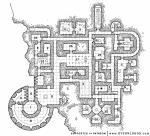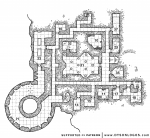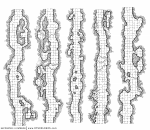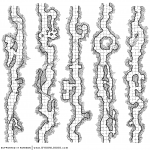
As we weathered the storm anchored off of Cruuk’s Shore, it was impossible to not notice the constant cascade of lightning striking to the standing stones by the old ruins that the sailor’s insisted on calling “Salanan’s Peril”. The bright flashes would leave terrifying ghost images upon the eye of bearded folk engaging in bloody sacrifices within the circle.
The warlord Salanan didn’t built the structure that sits in ruins on Cruuk’s Shore, but the ruins bear their name because they fought to maintain the structure here and prevent the Order of Talotos from engaging in their rituals at the standing stones across the small river.
It is said that the battle against the order went well for Salanan until the Year of Blue Dragons, when a series of fierce storms forced Salanan and their troops into the old structure which was then torn down by blast after blast of lightning that sundered the structure and scorched the land around it.
[video=youtube_share;v62juxcGuKM]https://youtu.be/v62juxcGuKM[/video]
I also recorded a short video of me drawing this map, since most of my existing videos show me working on dungeon maps. It is extra-short as I compressed it down to 20 seconds for easier sharing on social media.
Normally I get obsessed watching the hatching seem to pour out of the pens when I do time lapse videos of my work, but in this case, I just end up focusing on the hot-swapping of pens as I work.






